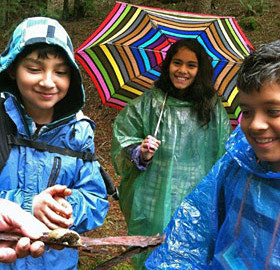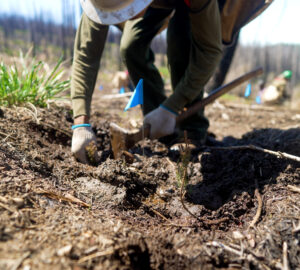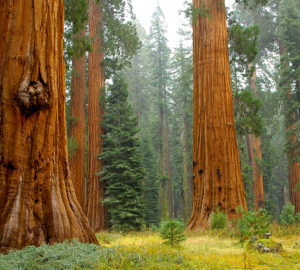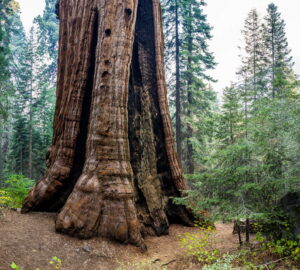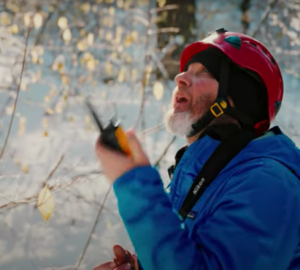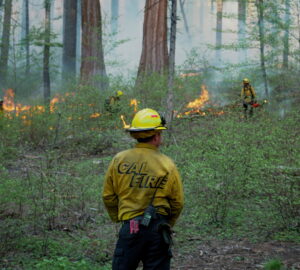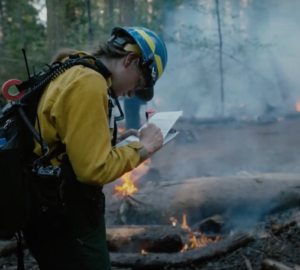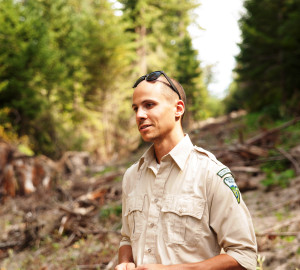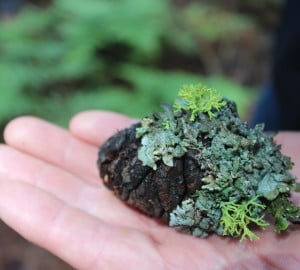
I often think of lichen as slow movers. Although they may be the first organisms to colonize a new area, they need a stable substrate to grow on — they don’t like any surface that changes too quickly. This may be the reason we don’t find many lichen growing low on redwood trunks, where the bark is shaggy and can slough off. Lichens are also thought to grow only a few millimeters a year. So imagine my surprise when I found lichen growing all over giant sequoia cones in Sequoia Kings Canyon National Park. Do sequoia cones really stay on a tree long enough for lichen to grow on them? Don’t the cones fall to the forest floor to release their seeds? Here is what I found…
It is really common to find lichen growing on giant sequoia cones — wolf lichen (Letharia) and tube lichen (Hypogymnia) are especially common. The fact that we find lichen growing on these cones can actually tell us a bit about how the cones form: A giant sequoia first starts producing cones at between 10-12 years old. When a female cone is fertilized it is only about the size of a grain of wheat. Over a couple of years it begins to develop, turning bright green and growing in size. By the end of their second growing season, the cones are mature and can produce viable seeds. This is where the story gets really interesting.
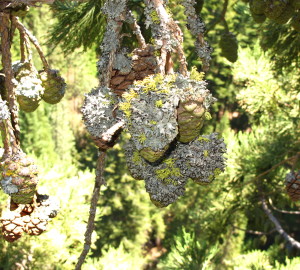
You would expect that once a tree has cones with viable seeds it would want to drop those seeds to the forest floor to start the reproduction process. But no — giant sequoias hold on to their cones for many years. The green cones stay attached to the stem and continue to photosynthesize and get bigger. Cones can remain on the tree for 8-12 years and one study found a cone that was 22 years old. Twenty-two years is definitely enough time for lichen to begin to grow. How do they know how old the cones are? Their “peduncle” or stem produces annual rings, just like the trunk of a tree!
So next time you are hiking around giant sequoia forests, look down to see if you can find a lichen-covered cone. If you do, it may be 20 years old!
To find giant sequoia parks, visit our Redwoods Finder interactive map.

